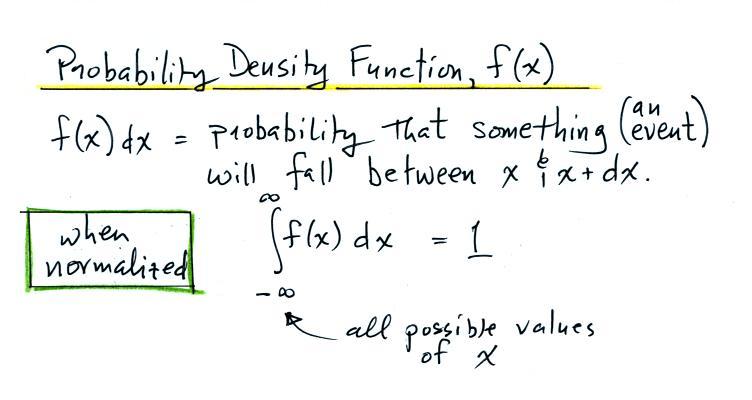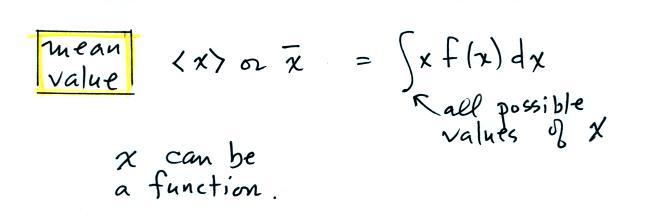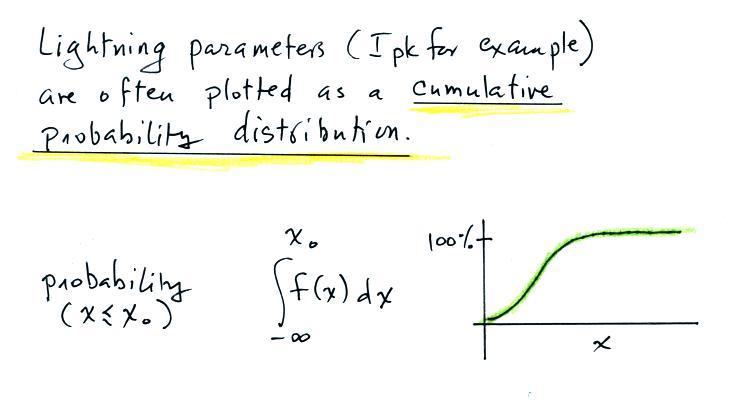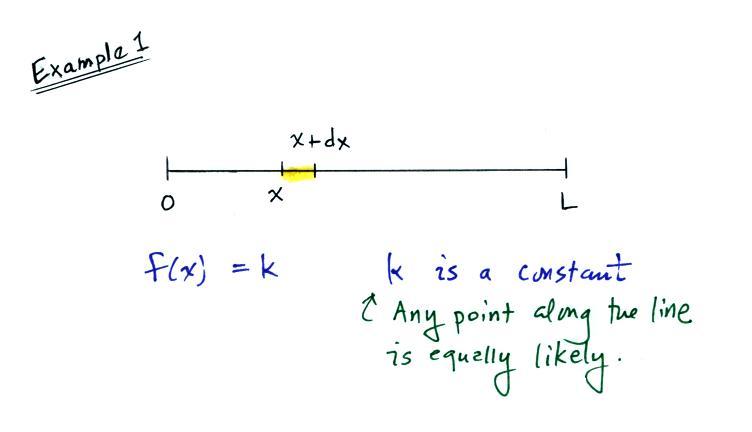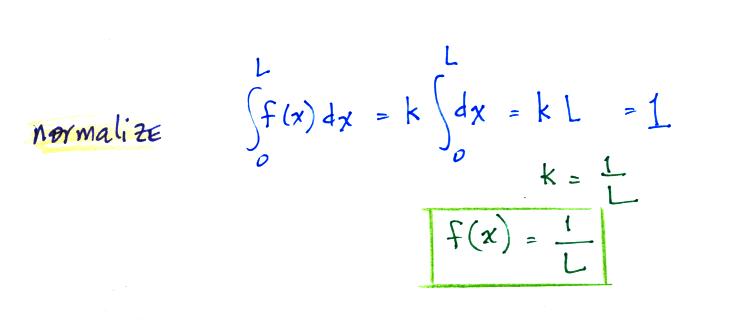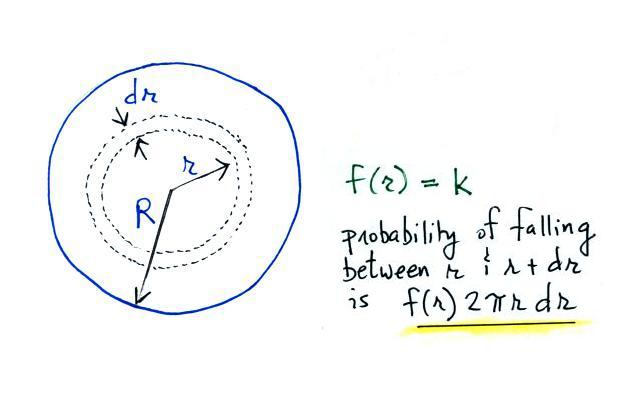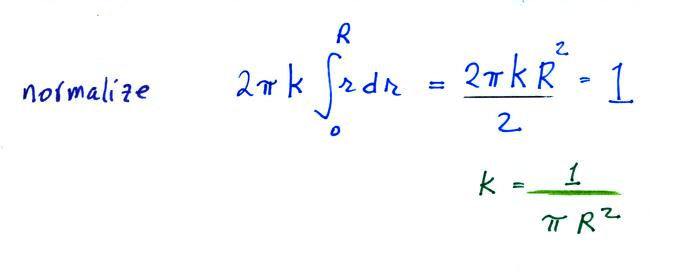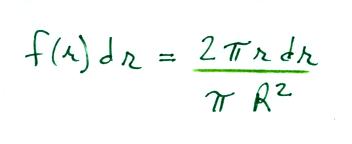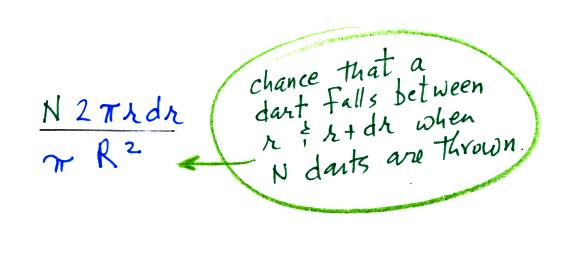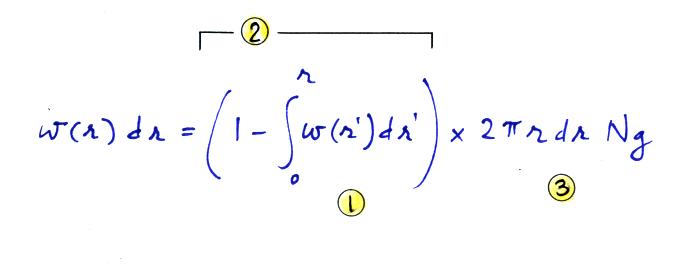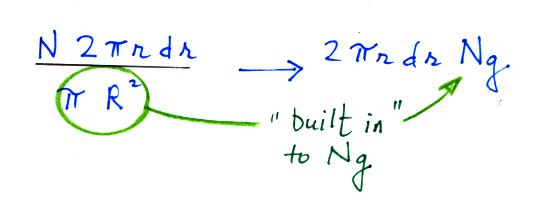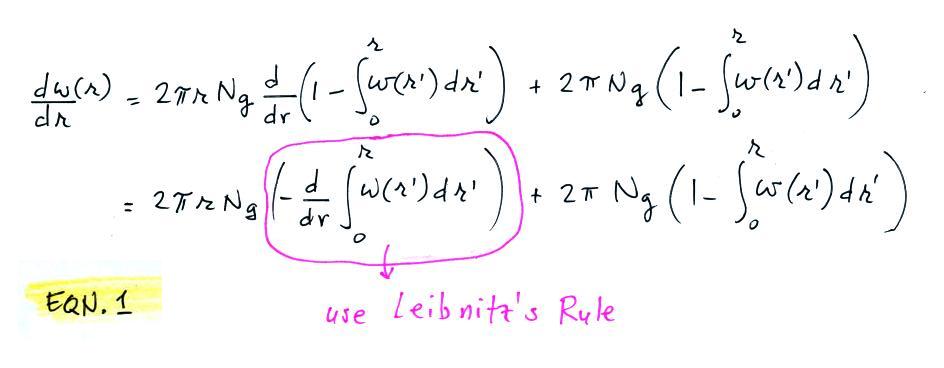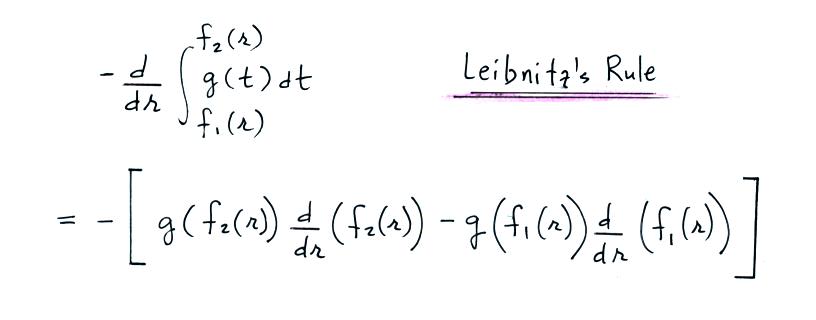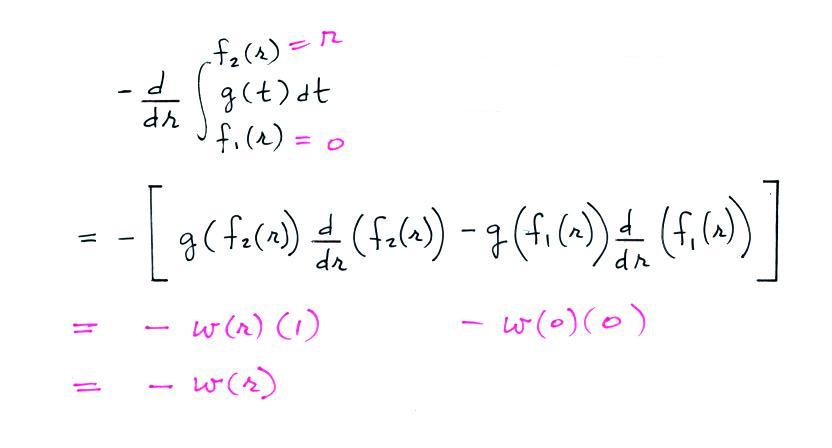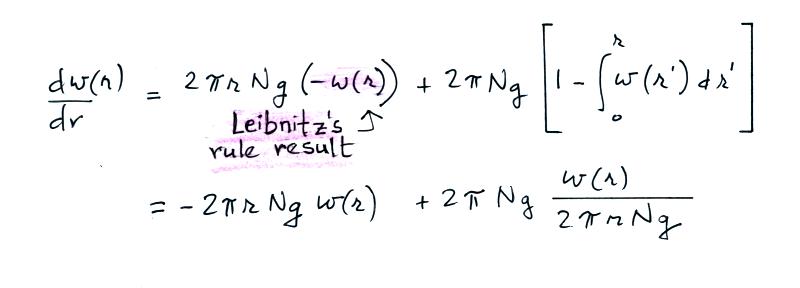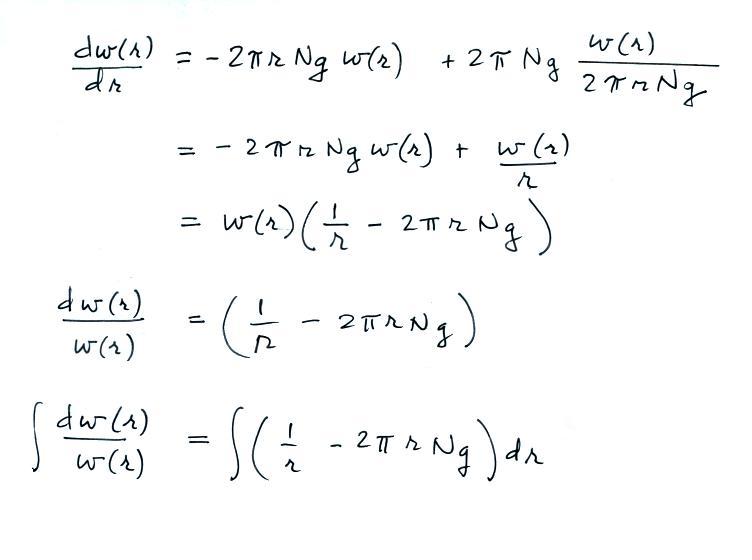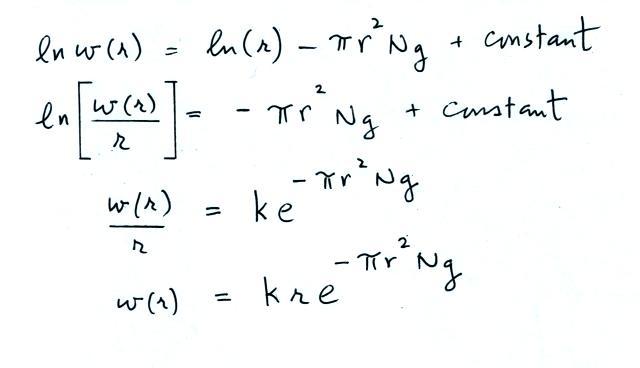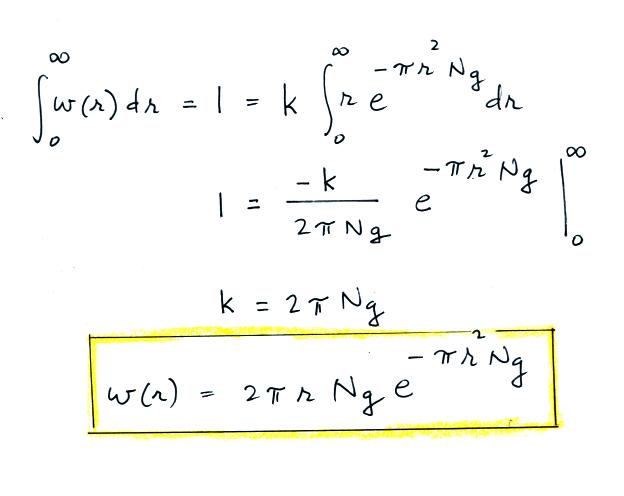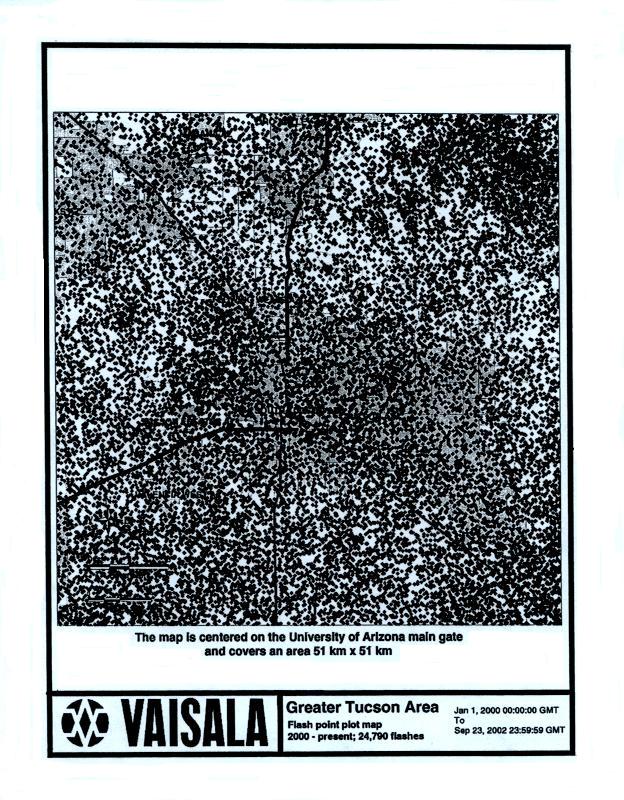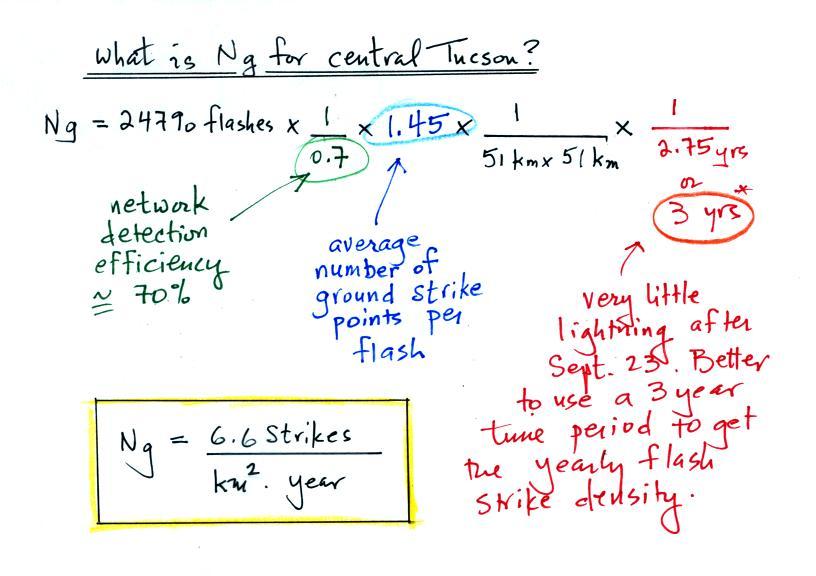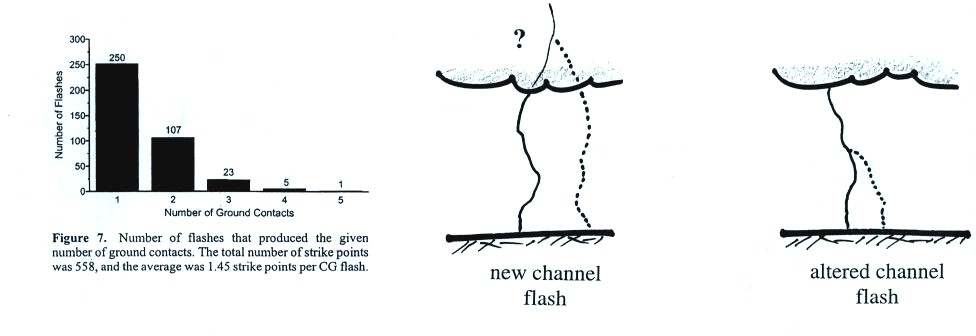So the probability that a dart
thrown at a dartboard will land between r and r + dr is
what if we were to throw N darts? As long as the throws are
independent of each other, the chances of having a dart land
between r and r + dr would be N times the result above
We can also compute
the average r just like we did in the earlier problem
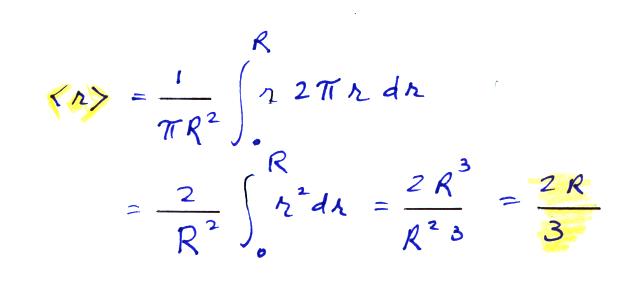
Now we're ready to derive the
nearest neighbor probability distribution function. The situation
is illustrated in the figure below.
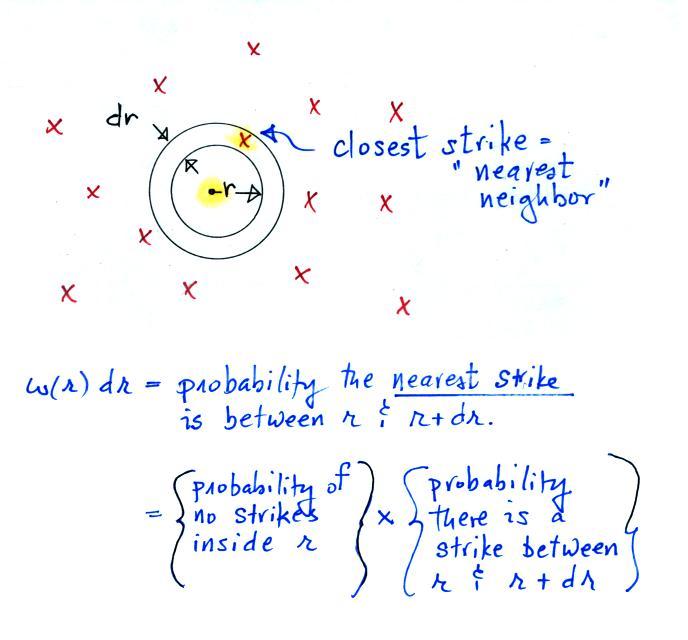
We're asking - what is the
probability that the nearest strike is between r and r+dr from a
randomly chosen point (in the figure above the randomly choisen point
is the highlighted point
in the center
of the circle)? This is not quite the
same as asking what the chances are of falling between r and r +
dr because now we want a strike between r and r
+ dr but nothing inside of r. We'll use w(r) to denote this
"nearest neighbor" probability distribution function.
We'll assume a lightning strike density of Ng strikes per square kilometer per
year and we assume that the strikes are randomly distributed.
So we can write w(r) as follows.
At (1) we are integrating w(r) from 0 to r to find out the
probability that the nearest neighbor is inside r. To find
the probability that the nearest neighbor isn't inside r we subtract
the integral from 1. That's expression (2) in the equation
above. (3)
is the probability that a strike falls between r and r + dr. It's
really just the dart board question again. We're multiplying by
Ng because there are, on average, Ng strikes per km2 per year.
At this point, we'll need to take a short detour. We need to
differentiate
the integral term with respect to r, but r appears in one of the
integral's limits.
Leibnitz's rule shows you how to handle the circled term.
The equation above is one version of Leibnitz's
rule. In the equation below, we apply it to our particular
problem.
Now we'll go back and substitute this into Eqn. 1 above.
Do you see what was done with the last term in the first equation
above?
We go back to an earlier expressure and divide w(r) dr by term (3)
above and use that to replace term
(2).
Now back to where we left off.
This is now in a form that we can solve
We have an expression for w(r) but
it contains an unknown constant k. But once we normalize this
equation we'll be able to determine a value for k.
The last equation (highlighted in yellow) is the nearest neighbor
distribution function.
The data above (from the National
Lightning Detection Network) shows 24,790 cloud to ground strikes
in a 51 km by
51 km area centered on the Main Gate at the U of A. These
strikes occurred between Jan. 1, 2000 and Sept. 23, 2002, a nearly 3
year period. One thing to notice is that the points appear to be
pretty uniformly distributed. We can use this data to estimate
the CG flash area strike density.
This figure shows how that is done. We multiply 24790 by
1/0.7 to correct for the 70% detection efficiency of the lightning
locating network. We then multiply by 1.45, the average number of
strike points per flash (see the figure below). We divide by the
51 km x 51 km area and divide by 3 years (there is very little
lightning between Sept. 23 and Dec. 31). On average there are 6.6
strikes per square kilometer per year in the Tucson area.
This is a portion of a figure that appeared in Lecture 15.
The left most figure is where the average 1.45 strike points per flash
value came from.
